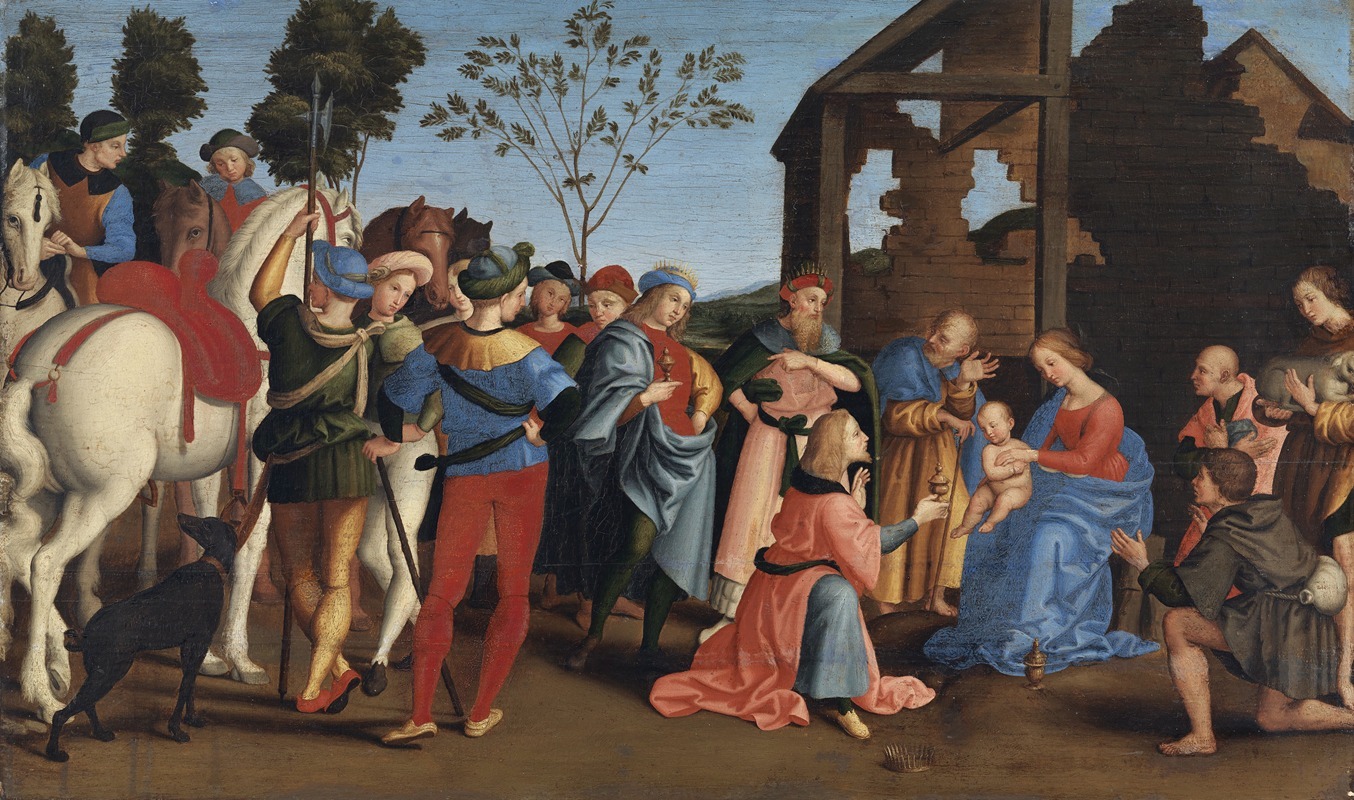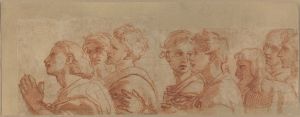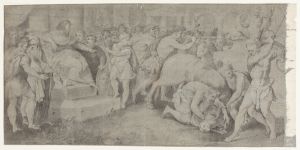
The Adoration of the Kings
A hand-painted replica of Raphael’s masterpiece The Adoration of the Kings, meticulously crafted by professional artists to capture the true essence of the original. Each piece is created with museum-quality canvas and rare mineral pigments, carefully painted by experienced artists with delicate brushstrokes and rich, layered colors to perfectly recreate the texture of the original artwork. Unlike machine-printed reproductions, this hand-painted version brings the painting to life, infused with the artist’s emotions and skill in every stroke. Whether for personal collection or home decoration, it instantly elevates the artistic atmosphere of any space.
The Adoration of the Kings is a painting attributed to the Italian Renaissance artist Raphael. This artwork is part of the rich tapestry of Renaissance art, showcasing the period's characteristic attention to detail, use of perspective, and vibrant color palette. Raphael, born Raffaello Sanzio da Urbino in 1483, was a master painter and architect of the High Renaissance, celebrated for his clarity of form and ease of composition.
The painting depicts the biblical scene of the Adoration of the Magi, a popular subject in Christian art. This scene illustrates the visit of the Magi, or Wise Men, to the newborn Jesus, bringing gifts of gold, frankincense, and myrrh. This event is described in the Gospel of Matthew and has been a significant theme in Western art, symbolizing the recognition of Christ's divinity by the Gentiles.
Raphael's interpretation of this scene is noted for its harmonious composition and the serene expressions of the figures, which are hallmarks of his style. The painting likely features a central depiction of the Virgin Mary holding the infant Jesus, surrounded by the Magi and possibly other figures such as Joseph, shepherds, or angels. The use of perspective and architectural elements in the background would be typical of Raphael's work, creating a sense of depth and grandeur.
Raphael's ability to convey emotion and narrative through his paintings is evident in the expressions and gestures of the figures, which guide the viewer's eye across the composition. The use of light and shadow would enhance the three-dimensionality of the figures, a technique Raphael mastered under the influence of his predecessors and contemporaries, such as Leonardo da Vinci and Michelangelo.
The Adoration of the Kings reflects Raphael's skill in blending the divine and the human, capturing a moment of spiritual significance with a naturalistic approach. His work often embodies the ideals of the High Renaissance, emphasizing balance, harmony, and beauty.
While specific details about the commission or the current location of The Adoration of the Kings are not well-documented, Raphael's works are housed in some of the world's most prestigious art collections, including the Vatican Museums, the Louvre, and the Uffizi Gallery. His influence on Western art is profound, with his techniques and compositions studied and emulated by artists for centuries.
Raphael's legacy as one of the great masters of the Renaissance is cemented by his ability to convey complex theological themes with clarity and grace. The Adoration of the Kings, like many of his works, exemplifies his mastery of form, composition, and color, contributing to his enduring reputation as a pivotal figure in the history of art.










